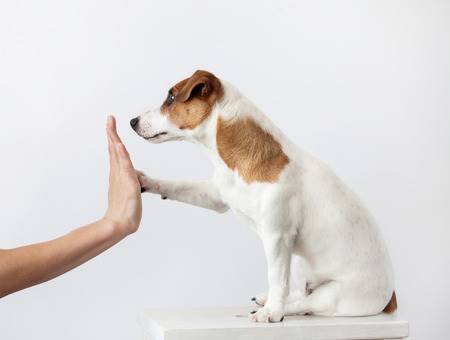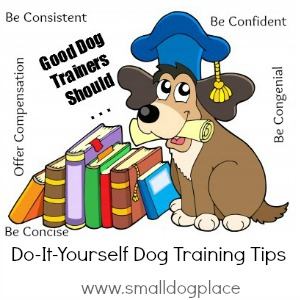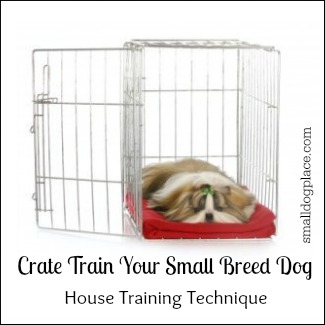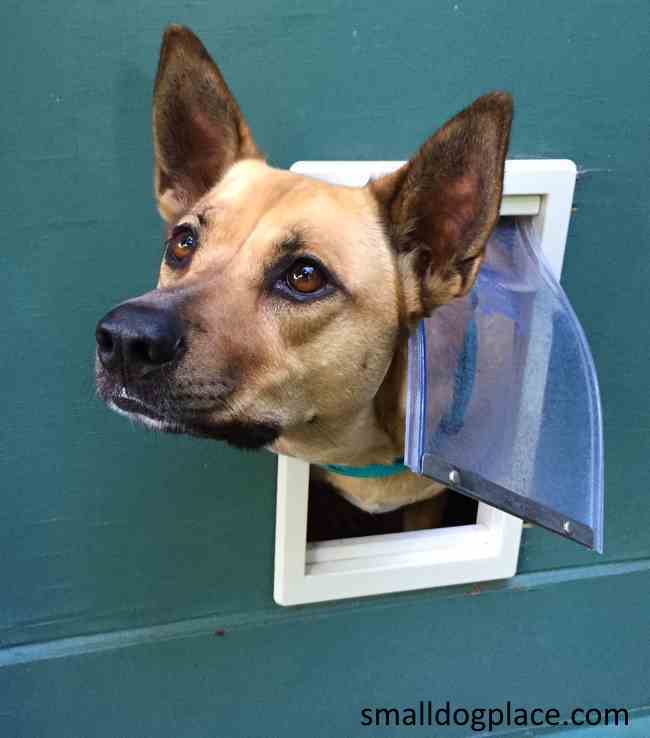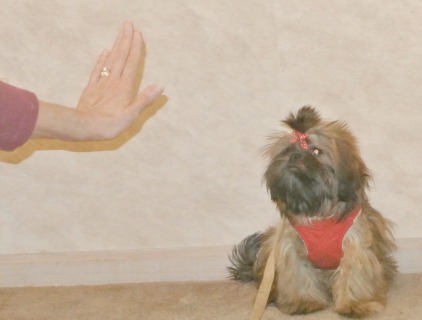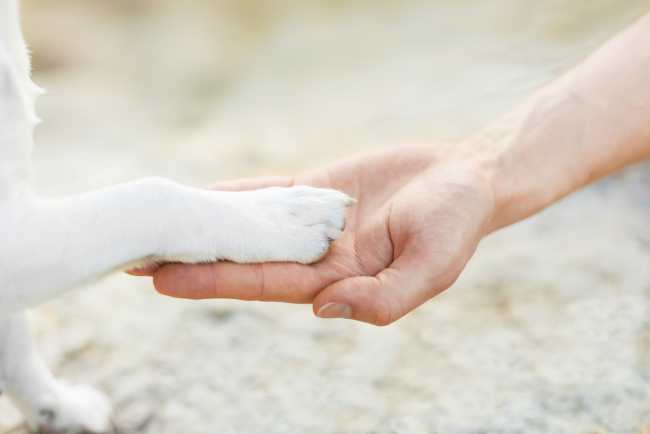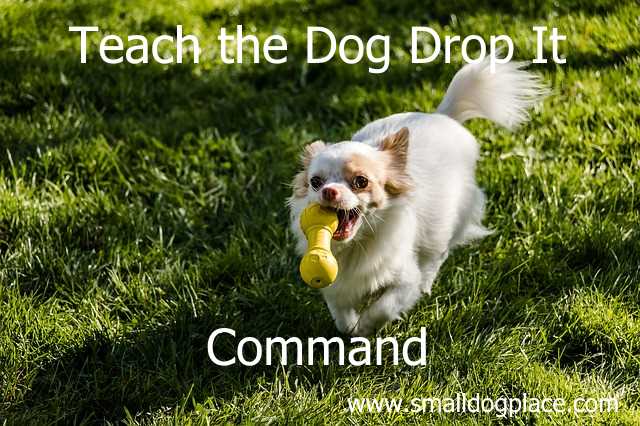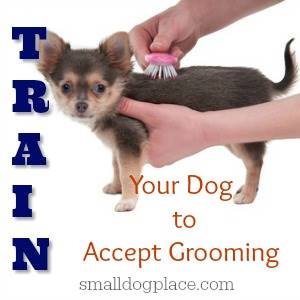- Small Dog Place Home
- Training
Small Dog Training Guide
by Janice Jones |Updated 02-09-2024
Small Dog Training is crucial if you want to take an active stance and assure that your small dog will turn out to be a happy, well-adjusted adult dog.
Many new small dog owners are not prepared for the amount of time and effort that goes into dog training that new bundle of joy. (OK, I'll admit I was there once myself, so don't despair)
Maybe you are one of those that believe that a tiny dog should be given lots of love, kisses and treats and let the problems surface before doing anything. This type of thinking can lead down the path towards Small Dog Syndrome.
Many new small dog owners are not
prepared for the amount of time and effort that goes into training that new
bundle of joy. (OK, I'll admit I was there once myself, so don't despair)
Maybe you are one of those that believe that a tiny dog should be given lots of love, kisses and treats and let the problems surface before doing anything. This type of thinking can lead down the path towards Small Dog Syndrome.
Click on any picture below or continue scrolling for more information.
Maybe you just don’t know where to begin with your small dog training project.
Don’t be misled by the many do-it-yourself dog training options that promise to answer all questions, resolve any issues, and turn your dog into a perfectly trained dog overnight.
Training takes time and patience, but the rewards are great.
Is it unmanageable? Of course not! Training your dog can be the best activity that you and your new puppy embark on to bring the two of you closer together. So, when and where to begin?
Small Dog Training: Everything Training for Your Dog
How to Train Your Dog to Dance

If you get bored with the typical command training and you think your dog has the aptitude, why not try teaching him to dance. This way both of you have fun and get moving at the same time.
Read more about how to teach your dog to dance
Brain Games for Dogs: Amazing Ways to Improve Your Dog's IQ
In the last century and even earlier, most dogs were trained for tasks such as hunting, guarding or other physical tasks. But nowadays pet dogs go for walks twice a day or play fetch games.
There are not enough challenges thrown at pet dogs due to which they get bored sometimes, and you know that bored dogs are very destructive.
You can stimulate your dog by providing him with interactive dog toys such as puzzles designed for dogs. A lot of puzzles have treats inside, and your dog wants to get that treat, and in the process of going after the treat, his brain works in solving the puzzle.
Options such as braided bully sticks or pork pizzles can be utilized as treats for dogs. These items offer nutritional benefits, being rich in protein which can contribute to enhancing the overall health of dogs.
Read more about Brain Games for Dogs
Where
to Begin Small Dog Training
We have many pages on training and
the site is growing quickly. If you
don’t see something, please ask. We may
already have it in the works and just not uploaded yet.
The information is based on our personal experiences, extensive reading, and yes I’ll admit I use a lot of what I was learned while completing an undergraduate degree in psychology.
Did you know that we often have to train ourselves before we start training the dog? There are five people skills that if mastered successfully make dog training so much easier.
The DIY Dog Training Tips page discusses these Human traits that help make dog training successful:
- Consistency,
- Conciseness,
- Congeniality,
- Confidence and the ability to offer
- Compensate with treats
Read more about DIY Dog Training
When to Start Small Puppy Training
When do I start training my new puppy? This is a good question and one whose answer has changed over time.
Years ago, experts recommended that you wait until they were “old enough” usually 6 months of age and had completed their full serious of vaccinations and de-wormings. We have learned much since the “Good ‘o Days.”
Today, most trainers agree that puppy training needs to begin as soon as you take your dog home. The same is true if you adopt an older dog.
Chances are that the adult dog will have had some training before arriving at your home. Your job, in that situation is to find out where the dog is in his training and pick up from there.
We think about small dog training as an ongoing process that includes teaching manners and social skills, basic commands and housebreaking.
Many puppies go beyond the basics, but the basics are a “must” for a happy, well-adjusted dog.
A well trained puppy is much less likely to ever see the inside of a dog shelter or rescue and will live out his life as a devoted family member that you, the proud owner will be happy to show off to all your friends and family members.
Here are a few tips to get you started with puppy training.
Socializing Your Puppy
There is much to be said about Socialization these days. Properly socialized puppies rarely see the inside of a shelter or rescue.
Most new puppy owners want to show off their new dog to all their friends, neighbors and loved ones, but don't think of these fun activities as part of their small dog training project. It should be. This should be a win win situation for both owner and puppy.
Very young puppies can get overwhelmed with all the attention but older puppies will thrive on all the new experiences.
But knowing how to socialize a new puppy is a very important skill that new dog owners can master quickly.
Crate Training and House Training
House and crate training are two topics always come to the top of every new puppy owner’s mind and well it should be.
There are several options for house training a puppy and one must decide beforehand which method will work best for their own personal situation.
Most people prefer for puppies and older dogs to find a suitable place outdoors for elimination.
Many, however, like the idea of an “indoor potty” for their new pooch. It is mostly a personal choice, as one is not necessarily better than the other.
Train Your Dog to Use a Doggie Door
A doggie door is an ideal addition for busy families and those with multiple pets. Dogs have the freedom to go out whenever they need to and can speed up housebreaking training.
Using a doggie door is not a natural behavior for dogs and some will need a little extra coaxing. Find out how to get your dog to use a doggie door.
Small Dog Training: House Training Supplies
While not exactly a training issue, having the right supplies will make the job of housebreaking your small dog so much easier. We've broken down the list of "must haves," so you can be prepared for all different situations.
You may also want to consider a double ended leash, also known as the umbilical method when trying to housetrain a puppy.
Besides a crate and a good enzyme cleaner, do you know what other items you can purchase to make the job go faster with less stress on your part? Read about how to "Make House Breaking Your Dog a Breeze with these Supplies."
Walking Nicely on a leash
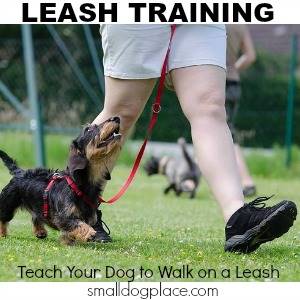
If dreams of leisurely evening strolls through the neighborhood are saturating your brain, you need to be thinking about training your dog to walk on a leash.
Even very young dogs can master this task, but it might not be accomplished overnight. Gentle leash training is a must for any small dog training project and any attempts to force a puppy to walk on a leash will likely be met with resistance.
What "Tricks" does your Puppy Do?
This is always the first thing that comes to mind when one thinks about what they want to accomplish with their small dog training project.
Puppies are at an advantage in they learn faster than at any other time in their lifespan.
In fact, it takes less time for puppies to learn a new trick than an older dog, even though there is not such thing as the old saying, “You can’t teach old dog new tricks.”
We know better! Puppies can be taught to do tricks, but basic commands such as sit and come, should be high on the training agenda.
No one needs a dog that can do a high five if they won’t come when they are called.
What are some basic manners that all small dogs should know? In the next article, we will take you step by step through five basic commands:
6 Fun Dog Tricks to Teach Your Puppy or Dog
Are you one of those lucky people who are the prideful owner of a cute, little puppy? Do you aim to increase their adoration by teaching them a few tricks making them good performers as well?
But to teach them some advanced level tricks, your dog first needs to know the basic commands like ‘sit’, ‘come’, and ‘down’.
Apart from these, I believe your pet dog should also have received some basic “Brain Training” and played some mind tricking games so he is more intelligent than other dogs.
Read More About Tricks to Teach Your Small Dog
How to Stop a Dog From Jumping On You and Everyone Else
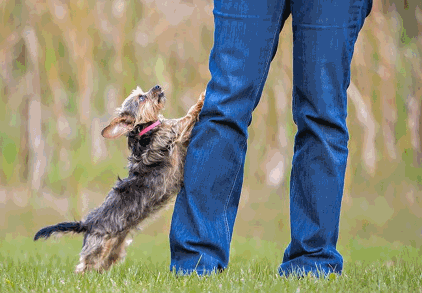 How to Stop a Dog from Jumping on you or others.
How to Stop a Dog from Jumping on you or others.If your dog jumps on visitors when entering your home, or jumps and nips at you, find the solution here. We have a fair amount of training to give you today so we’ll get right to it.
There are several causes of dog jumping. Does there need to be specific commands for each case?
Nope. And that’s because the result would be the same anyway:
Stop Jumping
We’ll cover practical obedience because no one wants to ignore their dog all day.
Otherwise, what's the purpose of having a little dog anyway!
Read more about Small Dog Jumping on People
The Dog Drop It Command: Six Steps to Mastery
Teaching your dog the “drop it” command is essential and can even save your dog’s life. Imagine a situation in which you are busy in some household work, and your dog starts to fiddle with toilet cleaner inside the bathroom.
Teach the Dog "Drop It" Command
Train Your Puppy to Accept Grooming
We don't always think about training a puppy to accept getting his nails clipped or his hair brushed.
We assume that the puppy will just cooperate, but that is rarely the case.
When it comes to breeds with long hair such as the Maltese, Poodle, Bichon Frise or Shih Tzu, those beautiful coats require time and work to keep them looking great.
It really helps to have a puppy willing to sit, stand, or lay down while you try to brush or comb his hair.
Read More About Training your Puppy to Accept Grooming
Small Dog Training & Behavioral Problems: Small Dog Syndrome
What if your puppy or adult dog is already showing signs of behavioral problems that you would want to correct. If they are not severe, there are things that you can do to steer your pooch onto the right path. Don’t get caught with a dog that has Small Dog Syndrome.
Some common dog problems include barking, nipping, chewing, jumping up, and separation anxiety. If you are worried and feel this is not an area you want to tackle on your own, relax, you're not alone. There are experts out there to help you.
You might want to start by enrolling your dog in a training classes.
Sometimes the trainer will be able to suggest something that works. If not, you might need to look for a reputable trainer that might work with you individually at their location or in your home. One place to start is to visit the Association of Professional Dog Trainers.
Some behaviors are inborn and are difficult to train out. Some can be modified so that the dog is easier to live with. Still other behaviors can be eliminated all together with training.
Training Small Dogs the Right Way - Super Effective Guide!
What is the best schedule for training your puppy or dog?What are some quick and easy commands that you can teach right away?
In this guest post, Robert examines how puppy owners go from an untrained dog to one that knows household rules, accepts handling, and is free of aggression.
His very helpful infographic lays out the process in very simple, easy to understand terms.
Read more about Training Your Small Dog the Right Way
What Can Two Weeks at a Dog Board and Train Program Get You?
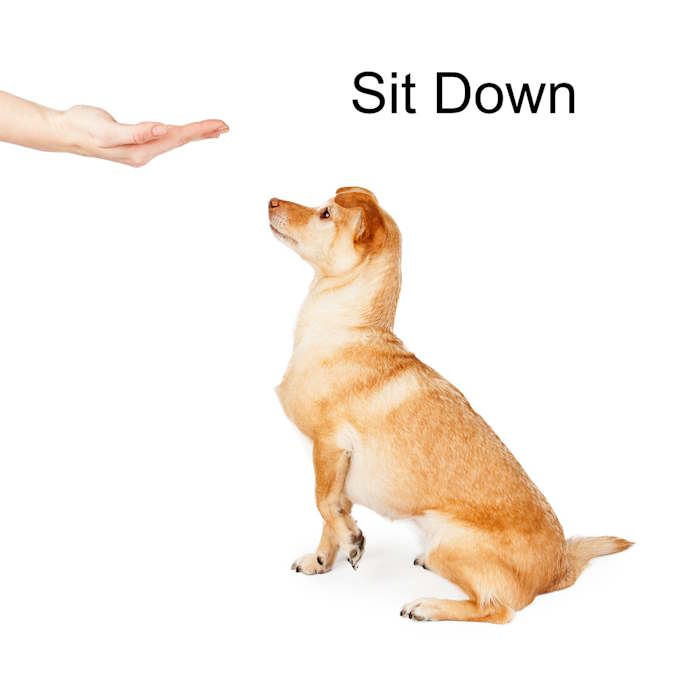
Many people chose to train their dog at home and others prefer to attend an obedience training class, but there is a third option: Board and Train. Find out what this entails and the benefits for you and your dog.
Read more about Dog Board and Train Program
About Janice (author and voice behind this site)
Having lived with dogs and cats most of her life, Janice served as a veterinary technician for ten years in Maryland and twelve years as a Shih Tzu dog breeder in Ohio.
Her education includes undergraduate degrees in Psychology with a minor in biology, Early Childhood Education, and Nursing, and a master's in Mental Health Counseling.
She is a lifelong learner, a dog lover, and passionate about the welfare of animals. Her favorite breed for over 50 years has been the Shih Tzu, but she has also lived with Poodles, Maltese, Yorkshire Terriers, Beagles, English Bulldogs, Carin Terriers, and a Cocker Spaniel.
When not writing, reading, and researching dog-related topics, she likes to spend time with her eight Shih Tzu dogs, husband, and family, as well as knitting and crocheting. She is also the voice behind Miracle Shih Tzu and Smart-Knit-Crocheting
Does This Article Deserve Your Thumbs Up?
We always appreciate your support and encouragement. Your thumbs up means so much to us. Please like this article.
If you find this page or any page on Small Dog Place Helpful, or useful in anyway, I'd love it if you would click the small heart found on the bottom right of each page.
You can also share or bookmark this page -- just click on the:

Free Monthly Newsletter
Sign Up for Our Free Newsletter and get our Free Gift to You.
my E-book, The Top 10 Mistakes People Make When Choosing a Dog (and how to avoid them)
